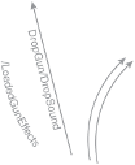Game Development Reference
In-Depth Information
Now the TFD is getting
really crowded! Just
remember that the
same option that was
presented for combi-
natorial tests is applica-
ble to TFDs, test tree
designs, or any other
formal or informal
means you use to come
up with test cases. You
can incorporate the
triggers into a single
design or create com-
panion test designs
that work together as a
suite of tests to provide
the trigger coverage
you need.
Figure 15.15
Ammo TFD with weapon skin Configuration flows.
You may also find it useful to document the intended triggers for each test element.
One easy way is to provide a letter code in parentheses after the event name on each
TFD flow, parameter value for combinatorial tests, or branch node for test tree
designs. You can count the number of times each letter appears to see how many times
each trigger is being used. It also helps you classify defects you find when running the
tests. Just be aware that this carries a maintenance burden to re-evaluate the trigger
designation whenever you move or add new test elements to the design.
What a difference the extra triggers make in the test design! Is it more work? Yes. But
it's also better. You have improved the capability of this test to find defects and you will
have more confidence in your game when it passes tests that use all of the triggers.
Defect Triggers were not created with any one particular test methodology in mind.
They are effective whether you are testing at the beginning or the end of the project
and whether you have meticulous test designs or you are just typing in test cases as
you go along. If you choose not to use them, you are adding to the risk of important
defects escaping into your shipping game.












































































